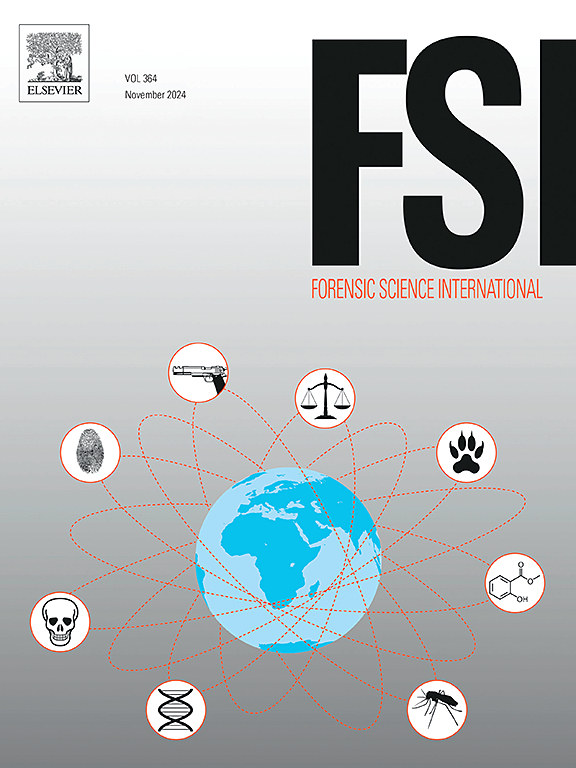Volabolomics的创新证据技术可能会改变“画家谋杀案”的判决结果?
IF 2.2
3区 医学
Q1 MEDICINE, LEGAL
引用次数: 0
摘要
在法医学的背景下,痕迹鉴定的进展是一个至关重要的方面。挥发组学研究的最新进展强调了使用挥发性有机化合物(VOCs)作为证据的可能性。本文将挥发性有机化合物的实验研究应用于法医调查,并将该方法应用于真实的谋杀案件。使用电子鼻传感器进行挥发性数据记录。我们在模拟谋杀真实环境的条件下,测试了塑料袋挥发性有机化合物的排放以及它们对尸体腐烂气体的渗透性,尸体挥发性有机化合物。所有类型的塑料袋都会释放挥发性有机化合物,根据材料和加工方法略有不同。此外,所有的气袋都允许挥发性有机化合物以一致的方式渗透,在48至72 小时内实现更高的渗透速率。这些结果突出了研究挥发组学痕迹的重要性,它可以通过丰富一套新的可测量证据来实现犯罪现场分析的突破。本文章由计算机程序翻译,如有差异,请以英文原文为准。
Volabolomics' innovative evidence technique could have changed the outcome of the ‘painter murder’ sentence?
In the context of forensic science, advances in trace identification are a crucial aspect. A recent advance in the investigation of Volabolomic science highlights the possibility of using Volatile Organic Compounds (VOCs) as evidence. In this paper, we applied experimental research on VOCs to forensic investigations, translating the method to a real murder case. Volabolomic data recordings were made using an electronic nose (e-nose) sensor. We tested, under conditions mimicking the true circumstances of a murder, the emission of VOCs from plastic bags and their permeability to the gases of cadaveric decay, Volaboloma mortis. All types of plastic bags used release VOCs, with slight differences depending on the material and processing method. In addition, all bags allow permeation to VOCs, in a consistent manner, enabling a higher permeation rate between 48 and 72 hours. These results highlight the importance of studying Volabolomic traces, which could enable a breakthrough in crime scene analysis by enriching it with a new set of measurable evidence.
求助全文
通过发布文献求助,成功后即可免费获取论文全文。
去求助
来源期刊

Forensic science international
医学-医学:法
CiteScore
5.00
自引率
9.10%
发文量
285
审稿时长
49 days
期刊介绍:
Forensic Science International is the flagship journal in the prestigious Forensic Science International family, publishing the most innovative, cutting-edge, and influential contributions across the forensic sciences. Fields include: forensic pathology and histochemistry, chemistry, biochemistry and toxicology, biology, serology, odontology, psychiatry, anthropology, digital forensics, the physical sciences, firearms, and document examination, as well as investigations of value to public health in its broadest sense, and the important marginal area where science and medicine interact with the law.
The journal publishes:
Case Reports
Commentaries
Letters to the Editor
Original Research Papers (Regular Papers)
Rapid Communications
Review Articles
Technical Notes.
 求助内容:
求助内容: 应助结果提醒方式:
应助结果提醒方式:


